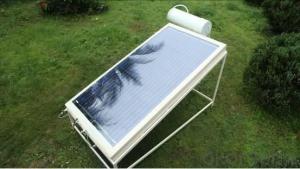Wholesale Polycrystalline Solar Cells with High Efficiency and Stable Performance
- Loading Port:
- Shanghai
- Payment Terms:
- TT or LC
- Min Order Qty:
- 5000 pc
- Supply Capability:
- 8000000 pc/month
OKorder Service Pledge
OKorder Financial Service
You Might Also Like
Polycrystalline Silicon Solar Cells:
A solar cell, is an electrical device that converts the energy of light directly into electricity by the photovoltaic effect, which is a physical and chemical phenomenon. It is a form of photoelectric cell, defined as a device whose electrical characteristics, such as current, voltage, or resistance, vary when exposed to light. Solar cells are the building blocks of photovoltaic modules, otherwise known as solar panels.
Polycrystalline Silicon Solar Cells Advantage:
• High efficiency and stable performance in photovoltaic conversion.
• Advanced diffusion technique ensuring the homogeneity of energy conversion efficiency of the cell.
• Advanced PECVD film forming, providing a dark blue silicon nitride anti-reflection film of homogenous color and attractive appearance.
• High quality metal paste for back surface and electrode, ensuring good conductivity, high pulling strength and ease of soldering.
• High precision patterning using screen printing, ensuring accurate busbar location for ease with automatic soldering a laser cutting.
Specification:
Mechanical data and design |
Format - 156 mm × 156 mm ± 0.5 mm |
Thickness- - 200 μm ± 20 μm |
Front (-) - 1.4 mm bus bars (silver),blue anti-reflection coating (silicon nitride) |
Back (+) - 2 mm wide soldering pads (silver) back surface field (aluminium) |
Temperature Coefficient of Cells |
Voc. Temp .coef.%/K -0.364%/K |
Isc . Temp .coef.%/K +0.077%/K |
Pm. Temp. coef.%/K -0.368%/K |
Electrical Characteristic |
Efficiency (%) Pmpp (W) Umpp (V) Impp (A) Voc (V) Isc (A) |
18.00% 4.380 0.538 8.141 0.634 8.740 |
17.90% 4.356 0.538 8.097 0.634 8.725 |
17.80% 4.331 0.537 8.065 0.633 8.710 |
17.70% 4.307 0.536 8.035 0.632 8.695 |
17.60% 4.283 0.535 8.006 0.631 8.680 |
17.50% 4.258 0.534 7.974 0.630 8.665 |
17.40% 4.234 0.533 7.944 0.629 8.650 |
17.30% 4.210 0.532 7.914 0.628 8.635 |
17.20% 4.185 0.531 7.88 -- 0.627 -- 8.620 |
17.10% 4.161 0.530 7.851 0.626 8.605 |
17.00% 4.137 0.529 7.820 0.625 8.590 |
Intensity Dependence |
Intensity [W/m2] Isc× [mA] Voc× [mV] Pmpp |
1000 1.00 1.000 1.00 |
900 0.90 1.000 0.90 |
800 0.80 0.99 0.80 |
500 0.50 0.96 0.49 |
300 0.30 0.93 0.29 |
200 0.20 0.92 0.19 |
IV Curve

Usage of Polycrystalline Solar Cells
Solar cells are often electrically connected and encapsulated as a module. Photovoltaic modules often have a sheet of glass on the front (sun up) side, allowing light to pass while protecting the semiconductor wafers from abrasion and impact due to wind-driven debris, rain, hail, etc. Solar cells are also usually connected in series in modules, creating an additive voltage. Connecting cells in parallel will yield a higher current; our solar cells have passed IEC Certification. With high and stable quality, our cells can greatly improve the performance of Solar Modules.
Applications of Polycrystalline Solar Cells
Assemblies of photovoltaic cells are used to make solar modules which generate electrical power from sunlight, as distinguished from a "solar module" or "solar panel". A solar array generates solar power using solar energy.
Packaging & Delivery of Polycrystalline Solar Cells
Carton Box Package and Deliver by air. It should be noticed that it should be avoid of water, sunshine and moist.
Solar Panel Images:
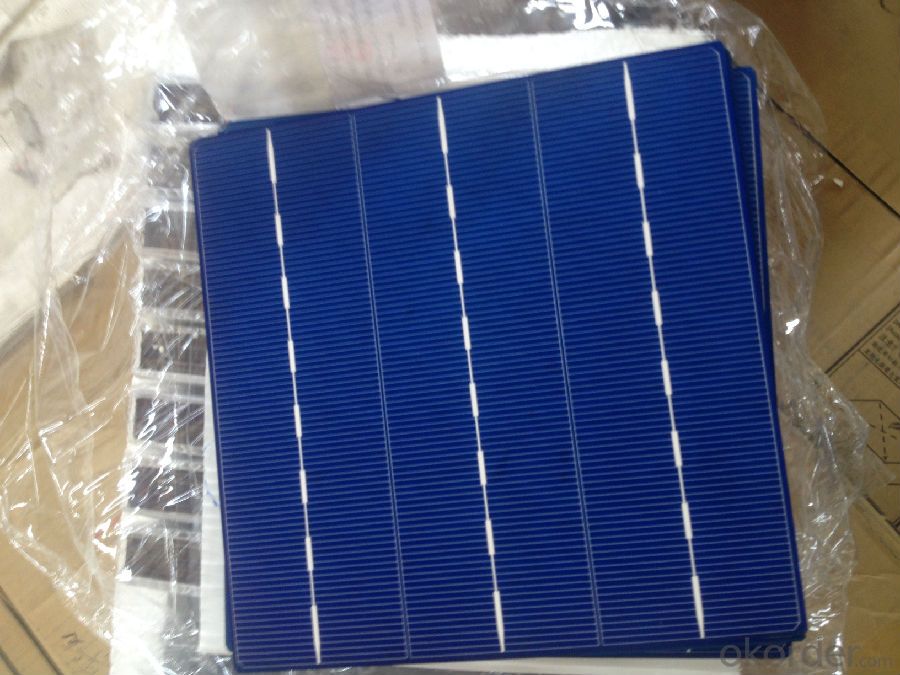
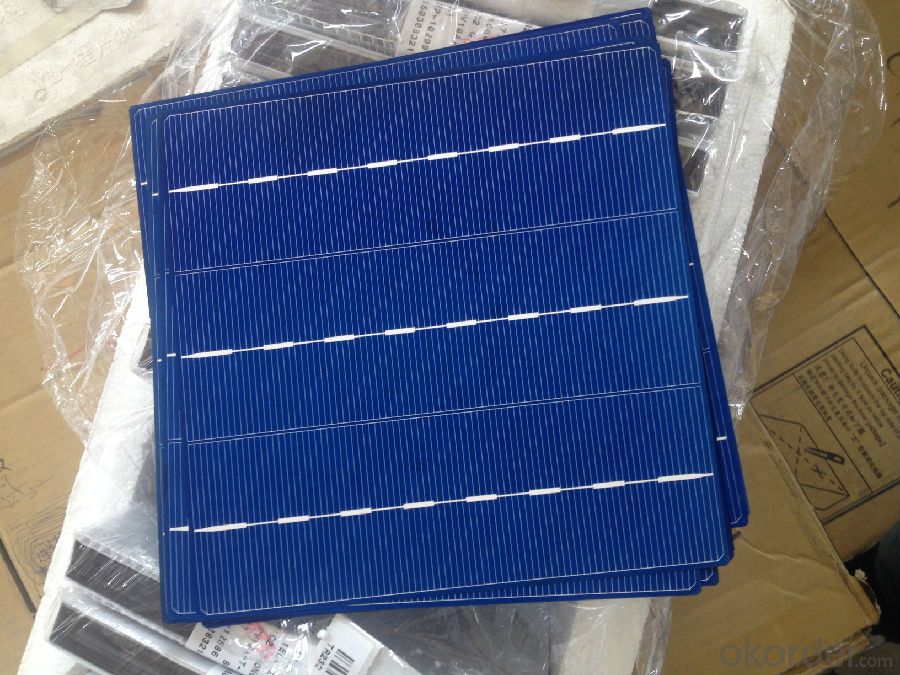
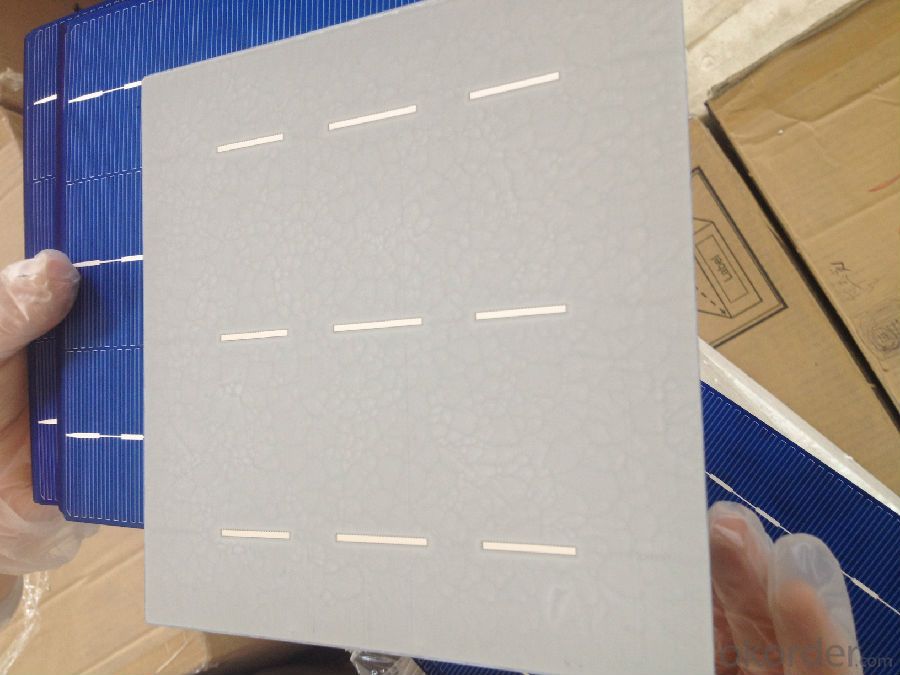
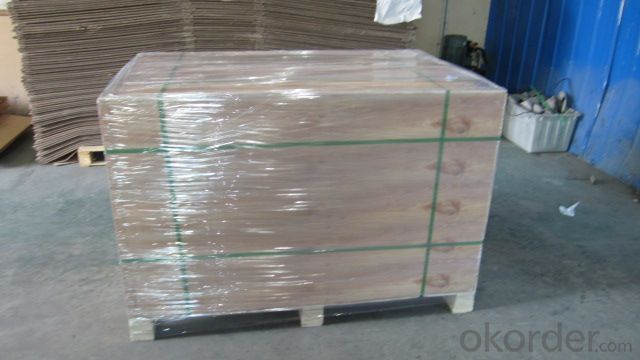
FAQ
We have organized several common questions for our clients,may help you sincerely:
①What price for each watt?
It depends on the efficiency of the solar cell, quantity, delivery date and payment terms.
②How long can we receive the product after purchase?
In the purchase of product within three working days, We will arrange the factory delivery as soon as possible. The pecific time of receiving is related to the state and position of customers.Commonly 7 to 10 working days can be served.
③Can you provide the peripheral products of the solar panels, such as the battery, controller, and inverter? If so, can you tell me how do they match each other?
Yes, we can, we have two companies for solar region, one is CNBM International, the other is CNBM engineering Co.
We can provide you not only the solar module but also the off grid solar system, we can also provide you service with on grid plant.
④What is your warranty of solar cell?
Our product can promise lower than 0.3% open box crack, we support claim after opening the box if it has crackm color difference or sth, the buyer should give pictures immediately, we can not accept the claim after the solar cell has assembled to solar panel.
• Timeliness of delivery
• ⑤How do you pack your products?
We have rich experience on how to pack the solar cell to make sure the safety on shipment, we could use wooden box or pallet as buyer's preference.
⑥ Can you do OEM for us?
Yes, we can.
Brief introduction of High Current Solar Cell
The output voltage of the high current solar cell must be calibrated high-voltage battery voltage. When the battery is fully charged, the controller disconnects the charging circuit. When the battery voltage is lower than the set voltage value, the charging circuit will re-open. Solar cells are to use light, when the charging is straight.
Slotted solar cells reduce the positive coverage, while expanding the contact electrodes, greatly improving the current collection, and thus obtain higher conversion efficiency.
Slotted solar cells due to process at the current level of processing technology and processing techniques should be relatively simple terms, it is the most suitable for large-scale industrial production, BP Spain UNSW use of technology has produced nearly a hundred since 1992 MW BCSC batteries, the main problem is to solve the industrialization process route design, and strict quality control of the production process.
Among the many aspects to consider in order slotting process and metallization process is most important, not only to the quality of the battery and cell conversion efficiency, but also a very strong impact on industrial productivity. Slotting process a variety of styles, laser, mechanical grooving, chemical corrosion, physical groove, etc., which have a mature technology; we can meet the design requirements. In particular it should be noted that the groove is formed BC battery key, groove, physical dimensions and surface state will very strongly affect battery performance parameters, in addition to metalization BC battery is a very important part, should arouse a high degree of seriously.
BCSC for monocrystalline silicon single-crystal silicon, should use high quality Cz silicon, should try to reduce the oxygen, and carbon content of heavy metal impurities, special emphasis is to select few defects, in order to ensure a higher wafer carrier lifetime.
- Q:What is the impact of shadows on solar cell performance?
- Shadows have a negative impact on solar cell performance as they reduce the amount of sunlight reaching the cells, thereby decreasing their efficiency in converting sunlight into electricity. Shadows can create hotspots on the cells, leading to potential damage and reduced lifespan. It is crucial to ensure that solar panels are installed in areas with minimal shading to maximize their performance and energy generation.
- Q:What is the expected degradation rate of a solar cell?
- The expected degradation rate of a solar cell can vary depending on various factors such as the quality of materials used, manufacturing processes, environmental conditions, and maintenance practices. However, on average, a well-designed and properly maintained solar cell can experience an annual degradation rate of around 0.5% to 1%. This means that over time, the solar cell's efficiency may decrease by 0.5% to 1% per year.
- Q:What is the payback period for solar cells?
- The payback period for solar cells depends on various factors such as the initial cost of installation, the amount of electricity generated, and the cost of traditional energy sources in the area. On average, solar cells have a payback period ranging from 5 to 10 years, but in some cases, it can be as short as 3 years or as long as 20 years.
- Q:What is the impact of bird droppings on solar cell efficiency?
- Bird droppings can significantly reduce the efficiency of solar cells. The droppings create a layer of dirt and debris on the surface of the cells, blocking sunlight from reaching the photovoltaic materials. This obstruction can result in a decrease in electricity generation and overall performance of the solar panels. Regular cleaning and maintenance are necessary to maintain optimal efficiency and prevent any long-term damage caused by bird droppings.
- Q:Can solar cells be used for lighting?
- Yes, solar cells can be used for lighting by converting sunlight into electricity, which can then be used to power various types of lighting systems.
- Q:How long does it take to install solar cells on a rooftop?
- The time required to install solar cells on a rooftop can vary depending on various factors such as the size of the system, the complexity of the installation, and the number of installers working on the project. On average, a residential rooftop solar installation can typically take anywhere from one to three days to complete. However, larger commercial or industrial installations may take longer, ranging from a few weeks to several months. It's always best to consult with a professional solar installer who can provide a more accurate estimate based on the specific project requirements.
- Q:What is the impact of solar cells on reducing water usage?
- Solar cells have a positive impact on reducing water usage because they generate electricity without needing water for cooling or steam production, unlike traditional power plants. This reduces the strain on water resources and helps conserve water for other important uses.
- Q:How do solar cells work to become the solar energy?
- Solar cells are a material used in producing solar energy. There are also many kinds of solar cells based on it's material and usage.
- Q:Can solar cells be used in countries with limited sunlight?
- Yes, solar cells can still be used in countries with limited sunlight. While it is true that solar cells generate more electricity in areas with abundant sunlight, they can still function and produce energy in regions with less sunlight. Advances in solar panel technology, such as the use of more efficient materials and improved designs, have made it possible to harness solar power even in countries with limited sunlight. Additionally, the use of energy storage systems, like batteries, can help store excess energy generated during peak sunlight hours for use during low-light periods. Therefore, solar cells can still be a viable and sustainable energy solution in countries with limited sunlight.
- Q:Can solar cells be combined with energy storage systems?
- Yes, solar cells can be combined with energy storage systems. This combination allows for the capture and storage of excess solar energy generated during periods of high sunlight, which can then be used during times when solar energy is not available. Energy storage systems help address the intermittent nature of solar power, ensuring a continuous and reliable energy supply.
1. Manufacturer Overview |
|
|---|---|
| Location | |
| Year Established | |
| Annual Output Value | |
| Main Markets | |
| Company Certifications | |
2. Manufacturer Certificates |
|
|---|---|
| a) Certification Name | |
| Range | |
| Reference | |
| Validity Period | |
3. Manufacturer Capability |
|
|---|---|
| a)Trade Capacity | |
| Nearest Port | |
| Export Percentage | |
| No.of Employees in Trade Department | |
| Language Spoken: | |
| b)Factory Information | |
| Factory Size: | |
| No. of Production Lines | |
| Contract Manufacturing | |
| Product Price Range | |
Send your message to us
Wholesale Polycrystalline Solar Cells with High Efficiency and Stable Performance
- Loading Port:
- Shanghai
- Payment Terms:
- TT or LC
- Min Order Qty:
- 5000 pc
- Supply Capability:
- 8000000 pc/month
OKorder Service Pledge
OKorder Financial Service
Similar products
New products
Hot products
Hot Searches
Related keywords











